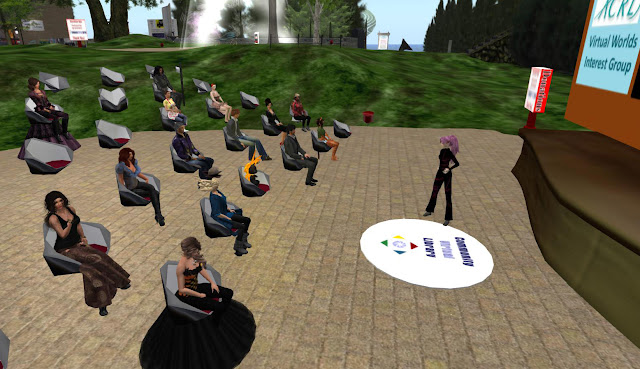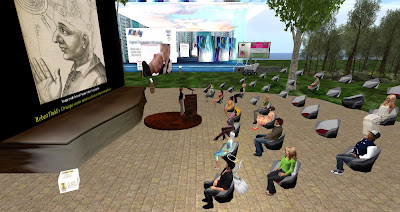ACRL-VWIG & ALA Virtual Communities in Libraries Program
November 19, 2017 12PM SLT
at the CVL Auditorium in Second Life
November 19, 2017 12PM SLT
at the CVL Auditorium in Second Life
"Using Sim-on-a-Stick to create portable Virtual Libraries"
presented by: Camie Rembrandt
At this month's meeting, Camie Rembrandt, presented on how to use sim on a stick or "SoaS" to create portable virtual worlds that can be used in stand-alone environments when people are unable to connect to Second Life or other virtual worlds or they need to work offline. Sim-on-a-Stick is a standalone, single user Windows package of OpenSim that runs on a USB flash drive.
 |
| Camie Rembrandt |
Using an OpenSim based virtual library has the advantage of being able to run off of a USB flash drive and they allow one to work in a virtual environment while being offline. Camie showed a brief video that outlined the steps and materials needed for creating a portable virtual world. The materials, except for the flash drive, are free and readily available online.
She went over some of the considerations one must make in creating sim on a stick. These include:
-Selecting a Viewer (client) to use
In theory, any viewer that works with OpenSim will work with Sim-on-a-Stick (She prefers the Kokua viewer.)
-Finding free 3D content
While SoaS comes with a default region where one start building in a virtual environment, there are many online sites that offer free 3D content. She recommended Zadaroo.com as a good place to find IAR files, folders that contain digital content with all kinds of items - from avatars to buildings which can be uploaded into SoaS inventory as well as OAR files, which are files that contain entire, ready to use regions that can also be uploaded into SoaS.
-Public Domain ebooks
A library wouldn't be complete without at least a token collection of books. In addition to the ability to create books in world by creating notecards and created objects and Camie recommended Project Gutenberg as a source for finding public domain books to be used in your SoaS library.
Once you have created your virtual library with SoaS you will be able to use it on other computers without having to install anything else on your hard-drive. The real advantage of a SoaS is that they allow educators and students to use this kind of portable virtual
library even in schools where there is no access to the internet.
For more information about teaching with Sim-on-a-stick visit http://teachingwithsoas.blogspot.com/
















































